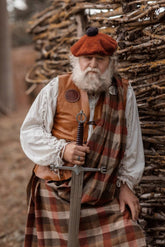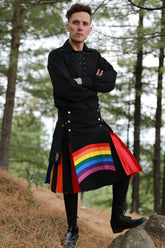Celtic Holidays & Ancient Festivals Around The Year!
Luxuriant Tapestry of 11 Celtic Holidays!
Embark on a journey through the luxuriant tapestry of 11 Celtic holidays, woven with ancient traditions and modern-day celebrations. From the ancient Celtic origins to the present day, these holidays offer a glimpse into the rich culture and folklore of Ireland and Scotland. From the lively Lughnasadh to the introspective Imbolc, the Celtic heart beats on, echoing the wisdom of our ancestors. These mystic festivities have long held the hearts of the Scots and the Irish, inspiring a new wave of feminine leadership and deepening roots in Irish mythology. Join me in exploring the enduring celebrations that have held life together for generations.
Ancient Celtic Festive & The Circle of Life:
The ancient Celts celebrated a number of festivals throughout the year, each with its own significance and traditions. One of the most important festivals was Beltane, which marked the beginning of summer and the renewal of life. Other festivals included Imbolc, Lughnasa, and Samhain, which was later Christianized as Halloween. These festivals were based on the Wheel of the Year, which includes four sun festivals and four seasonal festivals. The Celts viewed life as ongoing and growing but never-ending, and the festivals celebrated the circle of life. The festivals were marked with feasting, dancing, and rituals, and often included the lighting of fires and the wearing of traditional clothing and accessories. Today, many people still celebrate these ancient Celtic festivals as a way to honor their heritage and connect with the natural world.
Celtic Holidays:
Celtic Holidays are a rich tapestry of 11 major ancient festivals celebrated throughout the year, rooted in Celtic traditions and history. These holidays, such as Imbolc, Beltane, and Lughnasadh, are rare and often obscure, lacking common knowledge and awareness. They hold significant cultural and historical importance, offering insights into the ancient Celtic way of life. Our purpose here is to inform Celtic enthusiasts about these holidays. So, without wasting any more time, let's dive right into it, shall we?
1-Imbolc:
Imbolc, also known as St. Brigid's Day is a festival celebrated on February 1st in Ireland. It is one of the four major "fire" festivals or quarter days in Irish mythology, marking the beginning of spring and the arrival of longer, warmer days. Imbolc has its origins in the ancient Celtic festival of the same name, which was associated with the lambing season and the goddess Brigid. St. Brigid's Day is celebrated on the same day as Imbolc, and it is believed that the saint and her feast day are Christianizations of the pagan festival. The customs of St. Brigid's Day were not recorded in detail until the early modern era, but they include making crosses in St. Brigid's honor and creating a corn dolly to represent her. Since 2023, "Imbolc/St Brigid's Day" has been an annual public holiday in the Republic of Ireland to mark both the saint's feast day and the seasonal festival.
The festival is a feast of purification for farmers and has been compared to the Roman lustrations. The day is celebrated with various traditions, including the making of a symbolic cross made from straw or red ribbons, representing St. Brigid and positive expectations. People engage in cleaning activities to welcome spring, and flowers like crocuses, daffodils, and snowdrops start appearing, signaling nature's preparation for a vibrant season. Imbolc is a joyous occasion where people light candles, sow seeds, and seek positive growth. Observing the weather on this day is a tradition; sunny weather may extend winter, while rain could indicate an early spring.

2-St. Patrick's Day:
St. Patrick's Day is celebrated annually on March 17th, the anniversary of St. Patrick's death in 461. It is a day of great celebration for the Irish and people of Irish descent worldwide. The holiday has its origins in the 17th century and has evolved into a festival celebrated with parades, dancing, special foods, and music. St. Patrick, the patron saint of Ireland, was born in the 4th century and is honored for his missionary work and spreading of Christianity. He is also associated with legends such as driving the snakes out of Ireland and using the shamrock to explain the Trinity. In 1903, St. Patrick's Day became an official public holiday in Ireland due to the Bank Holiday (Ireland) Act 1903, introduced by Irish MP James O'Mara.
It combines old Irish traditions with Christian elements, with participants wearing green clothing and engaging in parades or church services to express respect. The day holds significance as a special holiday marking the anniversary of St. Patrick passing, and it coincides with the Spring Equinox, symbolizing the transition from winter to spring, creating a dual celebration. St. Patrick's Day started as a religious holiday but has evolved into a celebration of Irish culture. The first St. Patrick's Day parade took place in America, and the New York City parade is the world's oldest civilian parade and the largest in the United States.

3-Spring Equinox:
The Celtic influence is evident in the festival, as the Celtic name for the Spring Equinox is Easter or Ostara, which is celebrated on the first Sunday following the first full moon that occurs around March 21st. The equinox is the moment when the sun is directly above the equator, and day and night are of equal length. The origins of Easter are rooted in pagan traditions, particularly the festival of Ostara, which celebrates the arrival of spring and fertility. The Christian Church later incorporated these traditions into the Christian calendar, and the name "Easter" is derived from the pre-Christian goddess Eostre. Easter is a time of renewal and new beginnings, and symbols such as eggs and bunnies represent new life. The date of Easter changes every year because it is based on the lunar calendar, specifically the first full moon after the vernal equinox. The festival has been celebrated for a long time, with stories and traditions passed down through generations. Ancient Druids celebrated the Spring Equinox as a time for the Earth coming to life again, establishing it as a significant Druid holiday.
The Spring Equinox, also known as Ostara, is celebrated in various ways around the world. Many Easter traditions, such as decorating and hiding boiled eggs, have been borrowed from cultural customs related to fertility, such as the egg and rabbit. In some places, people take a walk during a sunny day to celebrate the coming of spring and shake off those winter blues. The Christ candle is lit first and is used to light worshipers’ candles in some Christian traditions. Although Easter is now a Christian holiday, it was originally a Pagan holiday, and the moon cycle is involved because of its association with fertility.

4-Beltane:
Beltane, also known as May Day, is a Gaelic May Day festival celebrated in Ireland, Isle of Man, and Scotland. It typically takes place between the spring equinox and the summer solstice, marking the beginning of the summer farming season when animals went out to pasture. The festival is associated with fertility, as it falls halfway between the spring equinox (Ostara) and the summer solstice (Litha), and it focuses on welcoming Celtic summer and good fortune for farms. Beltane is one of the eight Sabbats in Wicca, a modern pagan religion that blends practices from different cultures.
The celebration of Beltane has ancient roots, with evidence of it being observed in Ireland, Scotland, and other Celtic regions. The festival persisted widely up until the 1950s, and in some places, it continues to be celebrated today. Beltane is a fire festival, with fire being central to the celebrations due to its protective powers.

The festival involves various activities, such as:
- Maypole dancing: A pole is placed in a field with ribbons attached, and people dance around the pole in a special way to weave the ribbons into a specific pattern.
- Bonfires: Some pagans light a bonfire and dance around it, which is another common fertility ritual for the day. Bonfires are a key ritual to ward off negativity, and people jump over the bonfires for fun and good luck.
- Flower crowns: Celebrants might weave flowers into their hair or create a floral wreath to wear upon their head as a celebration of spring.
- May baskets: People prepare baskets filled with flowers and goodwill, and give them to someone in need of care or someone recovering from an illness.
Beltane is a time for coming together and celebrating life, honoring nature's fertile energy. Special blessings of this day are extended to cows during the celebration. Houses are adorned with flowers, adding to the festive atmosphere, and yummy feasts are enjoyed by all participants. Beltane marks the initiation of sunnier days, and the tradition involves restarting home fires, lit from hilltop fires. During Beltane, the veil between worlds thins, allowing magical fairies to interact with the human world. Modern-day pagans celebrate Beltane in a variety of ways, including building a special Beltane altar, having a bonfire, crafting a crown of flowers to wear, holding a Beltane feast, or even making a Maypole out of wood and ribbons. The modern Beltane celebration, as practiced by Wiccans and neo-Pagans, is a blend of ancient Gaelic, German, and Roman beliefs and rituals.
5-Summer Solstice:
The Summer Solstice is an astronomical event that occurs when one of the Earth's poles has its maximum tilt towards the Sun, resulting in the longest day of the year and the shortest night. It takes place between June 20th and 22nd in the Northern Hemisphere, marking the end of spring and the start of summer. The word "solstice" comes from the Latin words "sol" meaning sun and "stitium" meaning still or stopped. The Summer Solstice has been celebrated since ancient times, with evidence of its cultural importance dating back to the Neolithic era. It was traditionally observed by lighting bonfires, holding festivals, and performing rituals to honor the sun and ensure a healthy harvest.
The celebration has roots in ancient Celtic traditions and is associated with Stonehenge, adding a mystical and historical dimension to the celebration. People in rural areas, especially in the Scottish Highlands, light big fires, and jumping through these flames is a tradition to predict crop height. The festival involves communal activities like dancing, singing, and feasting, fostering a sense of togetherness. The celebration honors the sun goddess Etain, emphasizing the removal of bad spirits through light and embracing the positive aspects of summer's energy and happiness. The summer solstice occurs when the sun is directly over the Tropic of Cancer, which is located at 23.5° latitude North, and runs through Mexico, the Bahamas, Egypt, Saudi Arabia, India, and southern China. The day has also been celebrated in many cultures, and it is the only day of the year when all locations inside the Arctic Circle experience a continuous period of daylight for 24 hours.

6-Lughnasadh:
Lughnasadh is a Gaelic festival marking the beginning of the harvest season and is an official holiday in Ireland. It is usually celebrated on 1 August in the Northern Hemisphere and 1 February in the Southern Hemisphere, often beginning at sunset the evening before. Historically, it was widely observed throughout Ireland, Scotland, and the Isle of Man. Lughnasadh is one of the four Gaelic seasonal festivals, along with Samhain, Imbolc, and Beltane. It celebrates the decline of summer into winter and the beginning of the harvest season. The festival is associated with various rituals, traditions, and symbols, and is still celebrated today by Irish, Scottish, Manx, and Celtic neopagans.
The celebration of Lughnasadh involves:
- First wheat harvest: Lughnasadh is often marked by celebrating the first wheat harvest, which provided food for the coming year.
- Gratitude Rituals: People express their gratitude to nature and the Celtic god Lugh through dances, large fires, and ceremonies.
- Community Gathering: The festival brings people together to enjoy the harvest and express their gratitude for the harvest season.
- Ceremonial Fires: Lighting of significant fires is part of the festivities, symbolizing the power of nature and the connection to the divine.
- Connection to Nature: The celebration emphasizes appreciation for the land and Lugh for their contributions to the harvest.
- Festive meals: People cooked special ritual and festive meals during Lughnasadh.
- Harvest Commencement: The festival signifies the start of the harvest season, a time when crops are gathered and prepared for winter.

The festival was marked by various traditions, including staying up all night, couples blessing the earth with fertility by making love, and decorating houses and outbuildings with greenery and flowers. The festival serves as a time to connect with nature, express gratitude, and honor the harvest season. The ancient Beltane festival, which was sacred to Beltene, one of the names of the god of Death who gives life to men and takes it away from them again, has evolved into the May Day Bank Holiday. Lughnasadh, along with the other three key festivals, marked the transition between the winter and summer halves of the Celtic Year.
7-Autumnal Equinox:
The autumnal equinox is an astronomical event that occurs in September each year, marking the end of summer and the beginning of autumn in the Northern Hemisphere. The date of the equinox may vary from September 21 to 24 due to differences between the calendar year and the tropical year. It is a time when day and night share equal time, symbolizing the lengthening of nights. The equinox is the moment when the Sun appears to cross the celestial equator, heading southward. It is one of two equinoxes and two solstices that mark the start of a new astronomical season. The September equinox has inspired ancient myths, religious festivals, and customs, particularly those associated with harvest time. The traditional harvest festival in the United Kingdom was celebrated on the Sunday of the full moon closest to the September equinox.
The Autumnal Equinox is celebrated in different ways around the world. Ancient Celts viewed this time as crucial, celebrating the harvest and preparing for colder days. In the Northern Hemisphere, it marks the end of summer and the beginning of autumn. Many cultures celebrate the harvest season during this time, with feasts and festivals. In the Pagan tradition, the Autumnal Equinox is called "Mabon" and is celebrated as a time of gratitude and sharing abundance. Native American traditions also celebrate the equinox as a time of balance and harmony. Some neopagans observe the equinox as a cardinal point on the Wheel of the Year. To celebrate the Autumnal Equinox, people can enjoy seasonal foods, light candles, and spend time in nature. Aligning with the ebbs and flows of the seasons can be a potent tool for personal and professional development.

8-Samhain:
Samhain, pronounced "SAH-win," is a Gaelic festival celebrated from October 31 to November 1, marking the end of the harvest season and the beginning of winter. It is one of the quarter days in the medieval Gaelic calendar and is believed to be the origin of Halloween. The festival has ancient Celtic roots, with the Celts marking it as the most significant of the four quarterly fire festivals. Samhain is associated with the thinning of the veil between the living and the dead, allowing spirits to pass through. The wearing of costumes and masks to ward off harmful spirits is a custom that survived from Samhain and is now a part of Halloween traditions. The modern celebration of Halloween is thought to have been influenced by Samhain customs and beliefs.
Samhain, also known as Halloween, is a Celtic holiday and is associated with various traditions and beliefs. The festival is connected to the thinning of the barrier between the living and the dead, and it is a time for spiritual ceremonies involving bonfires, lights, food, and gifts for spirits. One major celebration location is Tara Hill, where tribes gather for rituals and feasting, resembling New Year's Eve for the Celts. Samhain is the precursor to modern-day Halloween, and its ancient customs are still emulated by some Neopagans today. Modern Samhain celebrations often involve setting up an altar with decorations, photos, and mementos to remember deceased loved ones. The holiday is also a time to gather with friends and family, share stories, and reflect on the past year's experiences.

9-Winter Solstice:
Winter solstice, celebrated on December 21st, is the moment when the Sun is exactly overhead the Tropic of Capricorn. This astronomical event is the shortest day and longest night of the year, signifying the official start of winter. It has been celebrated since prehistory and holds cultural significance in many societies. Ancient monuments like Stonehenge were even built to align with the sunrise or sunset on the winter solstice. The word "solstice" is derived from Latin, meaning "sun stands still," as the Sun's path across the sky appears to pause during this time. Winter solstice traditions and celebrations, such as Yule and Saturnalia, have been observed for centuries and have influenced modern-day customs associated with Christmas.
This event is celebrated in Scotland, Ireland, and many other cultures with various traditions. Some key aspects of winter solstice celebrations include:
- Decorating homes with evergreen plants to symbolize the everlasting nature of life.
- Hosting big feasts lasting 12 days to celebrate the season.
- Lighting fires to keep warm and cozy during the shortest day and longest night.
- Gathering mistletoe, believed to bring good luck and ward off bad spirits.
- At Newgrange in Ireland, the sun shines into an ancient passage for about 17 minutes during sunrise from December 19th to 23rd, symbolizing the triumph of light over darkness.
The winter solstice is a time of year when people come together to celebrate the return of longer daylight hours and the beginning of winter. The Winter Solstice, which marks the first day of winter in the Northern Hemisphere, will occur on Thursday, December 21, 2023, at 10:27 p.m. EST.

10-Michaelmas:
Michaelmas, also known as the Feast of Michael and All Angels, is celebrated on September 29th every year. It marks the end of the harvest, the beginning of autumn, and the shortening of days. In the fifth century, a basilica near Rome was dedicated in honor of Saint Michael the Archangel on this day, and celebrations began on the eve of September 29th. Michaelmas has been one of the four quarter days of the English and Irish financial, judicial, and academic year. They marked the conclusion of the farming year and financial settlements in England. In some traditions, the Archangel Michael is considered the greatest of all the angels and is honored for defeating the devil in the war in heaven. The day is associated with various customs and traditions, including the belief that clear weather on Michaelmas is a portent of a long winter.
It is a harvest festival with its roots in ancient Celtic traditions and is dedicated to honoring Michael and angelic beings. During the Middle Ages, Michaelmas was a great religious feast, and many popular traditions grew up around the day, which coincided with the harvest in much of western Europe. In Ireland, specific customs, such as sending a pretend Michael out to sea, add uniqueness to the celebration. A special bread called Michaelmas Bread Struan is baked during the celebration, crafted without metal tools. Michaelmas is likened to a celebration of the changing seasons, with vibrant Celtic colors in nature. In the Western churches, Michaelmas is now more commonly celebrated as the Feast of Saints Michael, Gabriel, and Raphael, the archangels. The festival teaches the importance of facing fears and strengthening resolve, and it is often marked by all-school plays in Waldorf schools, where each class assumes a role to depict a story related to St. Michael's victory over evil.

11-Lá na Marbh:
Lá na Marbh (Day of the Dead), also known as Féile Na Marbh, is an ancient Celtic festival that later became associated with the Christian holidays of All Hallows' Eve, All Saints' Day, and All Souls' Day. It is celebrated on November 1, which is the same day as All Saints' Day. The festival is considered a time when the veil between the worlds of the living and the dead is thin, allowing the spirits of the deceased to return to the earthly realm. In Ireland and Scotland, it is also known as Samhain. The tradition includes lighting bonfires, carving turnips, and guising, where children dress up as the dead to ward off spirits. In Mexico, a similar but distinct celebration called Día de los Muertos is observed on November 1 and 2, coinciding with the Catholic holidays.
It is a revered annual celebration in Mexico and many areas of the United States with robust Mexican-American communities, honoring deceased loved ones. It is a joyous and colorful occasion, believed to be a time when the spirits of the departed return to visit their families and loved ones.

Key aspects of the celebration include:
- Ofrenda: An altar or offering dedicated to the person being honored, featuring various items such as sugar skulls, photographs, candles, and traditional Mexican pastries.
- Graveside Visits: Family members visit gravesites and decorate them with flowers and other offerings.
- Parades and Celebrations: Communities in Mexico, Bolivia, Peru, and other parts of the Americas come together for loud, explosive, and joyful festivities.
- Catholic Influence: The holiday has evolved to include Catholic traditions and rituals, such as All Saints' Day and All Souls' Day.
These holidays are rooted in Celtic tradition and are linked to nature, agriculture, and the changing seasons. Day of the Dead is an intimate family tradition, allowing Mexicans to remember and honor their deceased loved ones, even for just an evening. While the festivities have become a popular tourist attraction, the celebration remains a deeply rooted and meaningful event in Mexican culture.
FAQs
What is the Wheel of the Year?
The Wheel of the Year is the basis for the Celtic festivals. It includes eight Sabbats, four sun festivals (Winter and Summer Solstice, Spring and Fall Equinox), and four seasonal festivals.
What is the significance of Celtic holidays?
Celtic holidays are rooted in celebrating and respecting nature and spirituality. They hold a rich cultural heritage and offer a glimpse into ancient beliefs and wisdom that are still woven into modern life.
Are Celtic holidays and festivals still celebrated today?
Yes, many Celtic holidays and festivals are still celebrated today, both in their traditional forms and as part of modern Pagan and Wiccan practices. These celebrations often include rituals, music, dance, and communal gatherings.
Are there any specific colors or symbols associated with Celtic holidays?
Yes, certain colors and symbols are associated with Celtic holidays. For example, green, white, and red are commonly associated with different festivals, and symbols like the Celtic knot, the triskele, and the green man are often used in decorations and rituals.
What are the most important Celtic holidays?
The most important Celtic holidays include Samhain, Beltane, Imbolc, and Lughnasadh.













